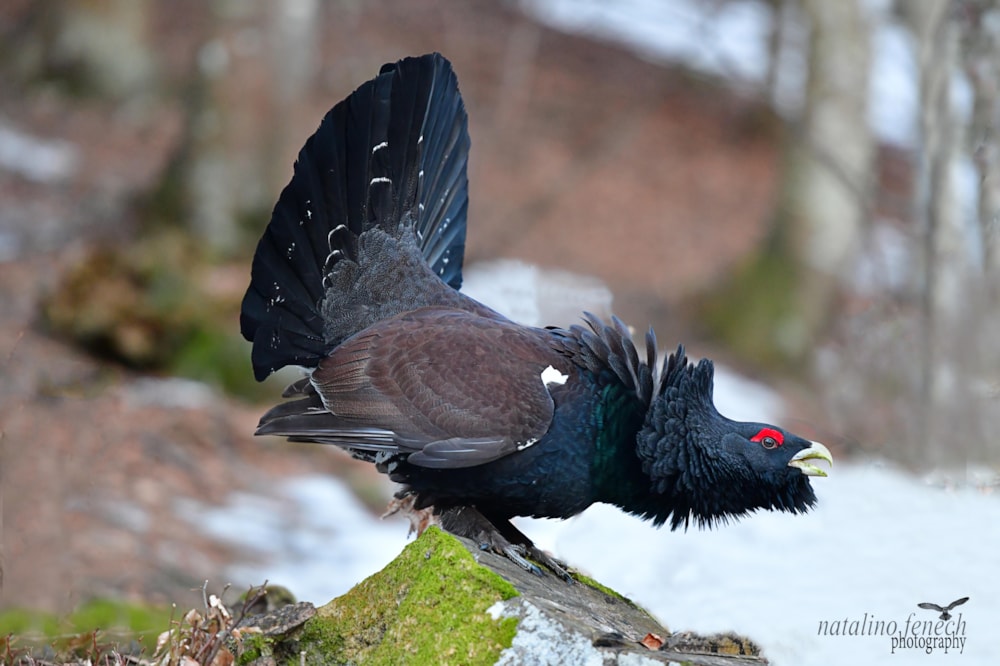DNA project could save Scottish capercaillies from extirpation
DNA extracted from Western Capercaillie feathers and other material found at brood sites in Cairngorm National Park is hoped to play a key role in pin-pointing how many remain in the wild and helping to form strategies for their future protection.
However, it is already feared that numbers have dropped so low, that the birds are already facing a 'genetic bottleneck', raising concerns over their ability to adapt and survive in the face of climate change. That has raised the possibility of birds being introduced from other European locations to strengthen and support the native population. A similar suggestion has been made by conservationists working to save the Scottish Wildcat.

Western Capercaillie has undergone a severe decline in Scotland, with no more than 1,000 thought to remain (Natalino Fenech).
Capercaillie DNA work is being undertaken by scientists at the Royal Zoological Society of Scotland (RZSS), at its WildGenes Laboratory, which has also carried out genetic work research on Scotland's Red Squirrel, White-tailed and Golden Eagle populations.
It is part of a wider Western Capercaillie conservation project focused on a corner of Cairngorm National Park popular with tourists and where clusters of the birds have been found. The Cairngorms Capercaillie Project has seen around 80% of the local Carrbridge community agree to throw their support behind a mission to survey capercaillie in the area, leading to the creation of the country's first Capercaillie Conservation Strategy.
Once complete, it is hoped it will form a blueprint for other communities living in 'Capercaillie areas' to develop their own action plans to help save the iconic bird from possible extirpation.
The project has already seen a massive community response, with volunteers devoting more than 1,000 hours of their own time across a range of projects designed to improve habitat for capercaillie, share sightings and signs of the birds, raise awareness of the birds' plight and gather vital information about their habits and numbers.
Efforts to protect the species have been dramatically stepped up amid concerns that numbers have plunged from around 20,000 in the 1970s to little more than 1,000 remaining birds. The birds are at particular risk from loss of habitat, predators and changing climate: wetter weather in spring which leaves chicks vulnerable from cold and starvation.
Meanwhile, fences constructed to protect young trees have also been found to lead to casualties among the population, while general disturbance of their territory is also said to be a key factor in their demise.
The DNA project involves the RZSS WildGenes lab working in collaboration with Scottish Natural Heritage (SNH); the Game and Wildlife Conservation Trust (GWCT); and the World Pheasant Association (WPA). A spokeswoman for RZSS said: "Using DNA we can effectively 'count' individual birds without needing to find and identify them in the field.
"DNA can be extracted from materials left behind at brood sites, such as the tip of the feather quill, and sets of DNA markers can then be employed to help identify Western Capercaillie individuals. From there, estimates of the population size can then be made from the unique DNA profiles that are generated from these samples.
"Collecting feathers for this is done in a careful and methodical fashion by experienced field-workers, to ensure that as many individual capercaillie are represented in the sample set as possible.
"It is then down to the lab to analyse the resulting DNA profiles that emerge, to estimate the number of capercaillie individuals sampled. This knowledge then helps to ensure that there is a sustainable wild population and informs any future conservation efforts for the species."

